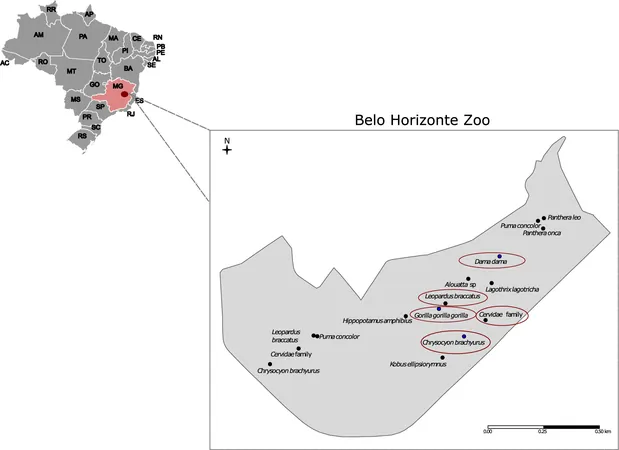
Alarming Findings: SARS-CoV-2 Detected in Wild Mammals at Belo Horizonte Zoo in Brazil
2024-11-19
Author: Sarah
Background
The COVID-19 pandemic has not only ravaged human populations globally, but it has also introduced serious ecological concerns regarding the transmission of the SARS-CoV-2 virus to wildlife, potentially establishing new natural reservoirs. This situation raises critical questions about the interplay between human activities and wildlife health. To address these urgent concerns, a recent study aimed to monitor and analyze the presence of SARS-CoV-2 in captive mammals at the Belo Horizonte Zoo in Minas Gerais, Brazil, while investigating the viral evolution and its zoonotic implications.
Methods
Conducted from November 2021 to March 2023, the study encompassed a diverse cohort of 47 mammals. Comprehensive testing involved collecting oropharyngeal, rectal, and nasal swabs. The detection of SARS-CoV-2 was conducted through RT-PCR techniques, followed by genomic sequencing to understand the phylogenetic relationships and evolutionary patterns of the virus in these animal populations.
Results
Out of the 47 animals sampled, 9 tested positive for SARS-CoV-2—an alarming positivity rate of approximately 19.1%. The most successful sampling method was rectal swabbing, with samples revealing two significant variants: the VOC Alpha variant found in both a maned wolf and a fallow deer, while the VOC Omicron variant was detected in a western lowland gorilla. Strikingly, phylogenetic analyses showed that these animal strains were closely related to human samples from the same geographic area, underlining the possibility of human-to-animal transmission.
Conclusions
This research underlines a crucial aspect of public health—the potential for zoonotic diseases to manage an ongoing public health threat. The findings suggest a significant level of interspecies transmission dynamics in wildlife, which may harbor the virus and contribute to its evolution. Continuous monitoring efforts of SARS-CoV-2 in wildlife are paramount to prevent future zoonotic outbreaks. This emphasizes the urgent need for public health strategies that integrate wildlife surveillance alongside human health measures to combat rising infectious threats.
The Bigger Picture
With millions of people infected globally and rising concerns of pandemic fatigue, the emergence of new variants and their spillover into wildlife pose greater dangers than ever. The discovery of SARS-CoV-2 in wild animals like deer and gorillas not only resonates across ecological and conservation communities but also raises questions about our responsibility in safeguarding both human and animal health.
Researchers have previously documented cases in a variety of species, from tigers in the United States to minks in Europe, indicating that the pandemic has revealed significant vulnerabilities across various animal taxa. The capacity of these viruses to adapt to new hosts highlights a crucial area of concern for the safety of both ecosystems and human communities.
Now more than ever, a close look at the intricate relationships between humans, domestic animals, and wildlife is imperative in creating a robust framework for emerging pathogen preparedness in the future. With zoonotic diseases accounting for approximately 60% of emerging human pathogens, the evidence supports a call to action for integrated health policies that consider the complete landscape of public health and biodiversity conservation. The findings from the Belo Horizonte Zoo should serve as a clarion call for researchers, policymakers, and the broader community to prioritize animal health in our ongoing battle against COVID-19 and beyond.
Don’t Ignore This!
As the risk of further zoonotic spillover intensifies, it’s vital to stay informed! Follow ongoing studies that explore the depths of this situation, the ever-evolving nature of SARS-CoV-2, and the actions we can take to protect ourselves and the wildlife we cherish. The story is far from over!

 Brasil (PT)
Brasil (PT)
 Canada (EN)
Canada (EN)
 Chile (ES)
Chile (ES)
 España (ES)
España (ES)
 France (FR)
France (FR)
 Hong Kong (EN)
Hong Kong (EN)
 Italia (IT)
Italia (IT)
 日本 (JA)
日本 (JA)
 Magyarország (HU)
Magyarország (HU)
 Norge (NO)
Norge (NO)
 Polska (PL)
Polska (PL)
 Schweiz (DE)
Schweiz (DE)
 Singapore (EN)
Singapore (EN)
 Sverige (SV)
Sverige (SV)
 Suomi (FI)
Suomi (FI)
 Türkiye (TR)
Türkiye (TR)